I am making a game in which the user player places circles on the screen. It is important that the circles never overlap, so I need to figure out the nearest possible free spot from the cursor. I have found circle packing algorithms, but they do not seem a fit for my problem. I have also solved a similar problem in the past for boxes (here), but with circles, I cannot seem to figure it out.
I figured out how I can find the nearest free position when it intersects with one circle, or even when two are involved. However, I cannot find a robust algorithm that can deal with complex cases that have any number of circles in any arrangement.
Precise description of problem: I have a 2D space with any number of non-intersecting circles, all with identical radii (though that may not matter). I want to find a position for the next circle that will make it not intersect with any other circle, and which center [x,y] is nearest to a specified location [x,y].
Suggestions of any kind appreciated (references, approaches, or (Java) libraries).
p.s. Bonus points if the solution includes making sure the circle stays within a specific bounding box (i.e. display).
My final solution: (based on David Wallace's suggestions)
- Calculate the minimal distance between the centers of two circles (in my case, all circles are the same size, so always 2*radius)
- Make a list of all circles that are closer to the mouse position than the minimum distance
- If 0 overlaps: all good!
- If 1 overlap: move the new circle's center to the minimum distance from the compared circle's center, along the vector that runs from compared circle's center to mouse position
- If 2 overlap: find out where the two overlapping circles intersect. Place the new circle on the intersection closest to the mouse position. If this position still overlaps with any circle, move to the other intersection. If that one doesn't work, leave the new circle were it is.
- If 3 overlap: same as in 2 overlap, just take the two circles closest to the new circle.
Note that this does not work perfectly, but good enough in my case, where a user is dragging the new circle on the screen. It works in most cases and in those it doesn't, usually when there are many circles very close together, the new circle simply stays in the last position (which was valid). The user can then decide to drag it a fit further and be more precise in where he wants the new circle to go.
